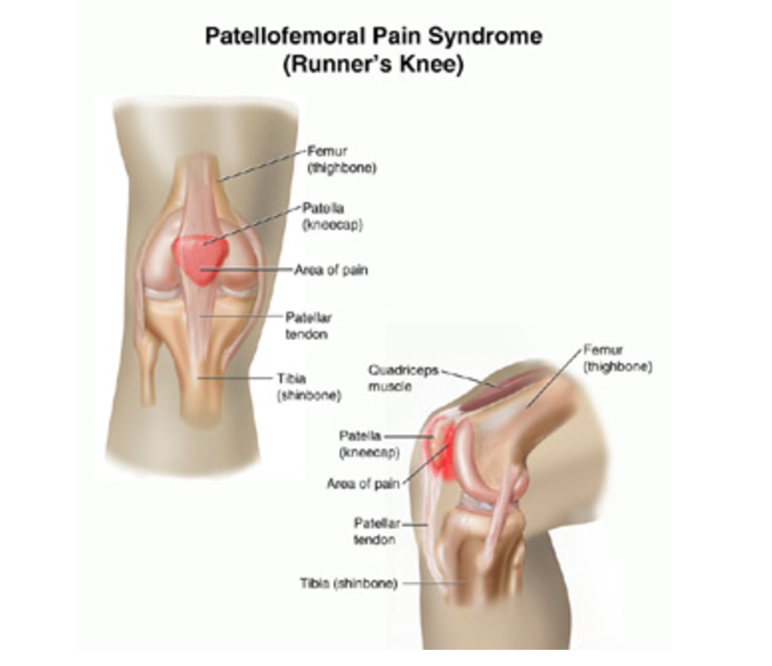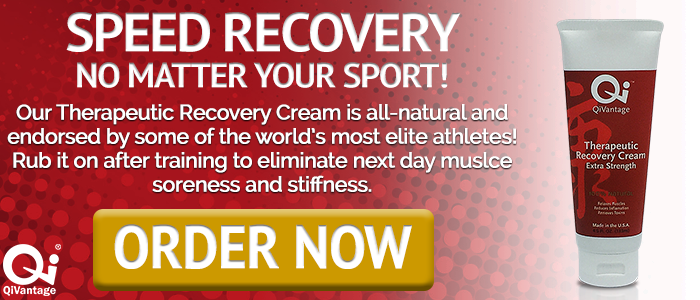If you’ve ever suffered from runner’s knee (patellofemoral pain syndrome) you know that it can be one of the worst injuries that a runner, or really any athlete, can suffer from. It’s been described as feeling like your knee has rusted which makes it painful to bend. Runner’s knee is actually a very common injury, but it’s not easy to get rid of or keep from coming back.
The problem with most athletes is that when we suffer an injury, we fall back into our old routine hoping for a better outcome. We suffer the injury, take a few days off, ice it, and then get back to our sport. Then we wonder why the injury keeps coming back. As Albert Einstein famously said, “The definition of insanity is doing the same thing over and over and expecting different results.” To actually help alleviate the symptoms of runner’s knee and keep it from coming back you’ve got to think differently.
This is where incorporating active recovery into your recovery process can make all the difference.
First, let’s identify what runner’s knee actually is. Runner’s knee is irritation where the kneecap (patella) rests on the thigh bone. It’s often a result of under trained quadriceps and hamstrings. Pain is typically found at the top of the patella and may be sharp or dull. As it’s name suggests, it’s very common in runners and is brought on by spending significant time running and your quadriceps and hamstrings not being able to handle the stress.
Now that we’ve identified what runner’s knee is, how can active recovery help? It’s pretty simple, runners cannot just run and expect that they’ll be in shape to take on that next 5k or marathon. After resting (which is important to allow your body to begin to heal, reduce any swelling, and alleviate some of the pain) you need to take an active approach to your healing process. Here are five ways that incorporating active recovery into your routine can help heal your runner’s knee and help keep it away.
Strengthening quads and hamstrings
Like we just went over, typically this injury is due to weak quadriceps and tight hamstrings. Engaging in an active recovery program (even after the injury is healed) will help you begin to strengthen these muscles which will help prevent it from recurring in the future. Now, remember, active recovery is not meant to be a full on heavy workout. It’s meant to be performed at only 60-70% effort (and can be done at less than that if your injury is still fresh). Don’t go crazy, but you should be focusing on building up these muscles so that you don’t have to do this all over again in six months.
Loosening muscles
No matter what active recovery program you choose to take part in, make sure that you incorporating activities that will loosen up your muscles. We recommend yoga for this. It’s a great low intensity workout that will help to loosen tight muscles (your hamstrings in particular) and also build strength. If your hamstrings continue to be tight, you’re at risk of reinjuring your knees.
Blood flow
Increasing blood flow is paramount to a successful recovery. All efforts should be made to increase blood flow to the affected area. This is why heat is your best friend. An active recovery program will help get your blood moving which will deliver oxygen and nutrients to your injured knee(s) and help them repair themselves. It will also help remove the toxins that immediately start building up at the site of an injury.
The QiVantage Therapeutic Recovery Cream can help increase blood flow to your knees. Apply liberally to legs and knees before and after running.
Overall muscle and joint health
One of the best things that you can do for yourself as a runner is to not think of yourself as just a runner. You’re an athlete and you need to train like one. Only focusing on running does not make you a good runner. You’ve got to partake in other exercises in order to ensure the health of all muscles and joints in your body. While the majority of your workouts should revolve around running, taking a day or two per week to engage in an active recovery session where you take a break from running and train in other ways will help you recover from your injury, but also make you a better all around athlete.
Remove built up lactic acid
This one kind of comes back to the blood flow point, but engaging in an active recovery program will help you to remove built up lactic acid from your training sessions by increasing your blood flow and pushing it out of your muscles. Sore muscles are not peak performing muscles.
Learn more about what active recovery is and why it’s important in our active recovery post!
We understand that suffering from runner’s knee can be one of the most frustrating things in the world. If you’re determined to get back to the track or trail as soon as possible, we recommend trying our all-natural injury treatment kits. They’re guaranteed to get you back to 100% faster than you thought possible!





Leave A Comment